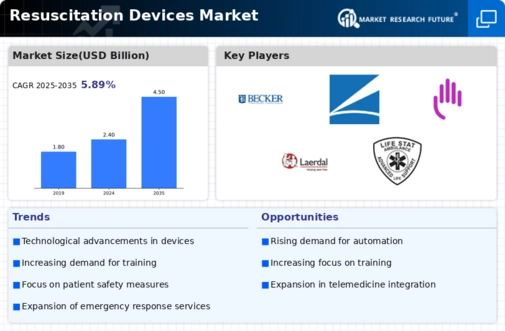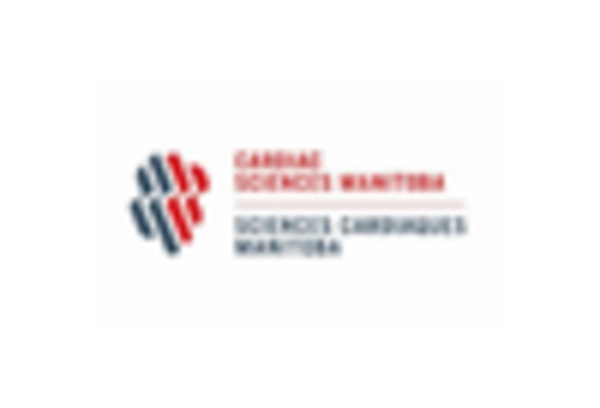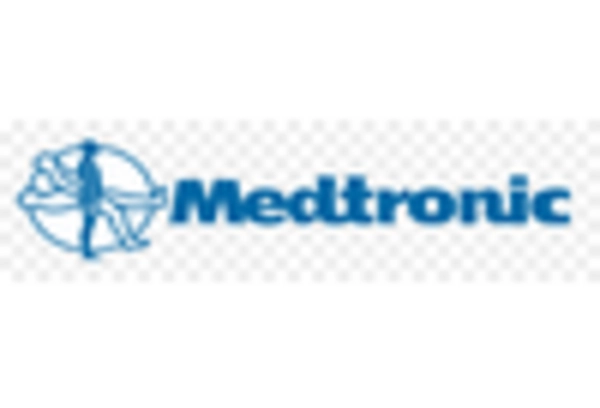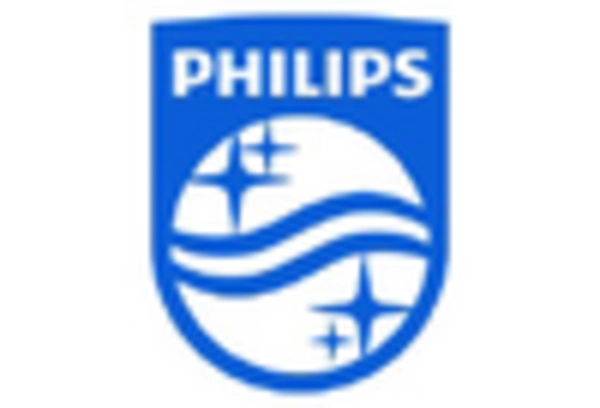Rising Incidence of Cardiac Arrests
The increasing prevalence of cardiac arrests is a primary driver for the Resuscitation Devices Market. Statistics indicate that approximately 350,000 cardiac arrests occur annually in the United States alone, highlighting a pressing need for effective resuscitation devices. This trend is mirrored in various regions, where lifestyle factors such as obesity and sedentary behavior contribute to cardiovascular diseases. As awareness of the importance of immediate resuscitation grows, healthcare providers are investing in advanced resuscitation devices to improve survival rates. The demand for automated external defibrillators (AEDs) and advanced life support equipment is expected to rise, propelling the Resuscitation Devices Market forward. Furthermore, public access to these devices is becoming increasingly prioritized, suggesting a potential expansion in market reach.
Growing Awareness and Training Initiatives
The increasing emphasis on training and awareness regarding cardiopulmonary resuscitation (CPR) is significantly influencing the Resuscitation Devices Market. Educational programs aimed at both healthcare professionals and the general public are becoming more prevalent, fostering a culture of preparedness. Organizations are actively promoting CPR training, which in turn drives the demand for resuscitation devices. For example, the American Heart Association has reported a rise in CPR training sessions, which correlates with increased sales of AEDs and other resuscitation equipment. This trend suggests that as more individuals are trained in CPR techniques, the likelihood of using resuscitation devices in emergencies increases, thereby expanding the market. The focus on community training initiatives is expected to further bolster the Resuscitation Devices Market.
Regulatory Support and Standards Development
Regulatory frameworks and standards play a pivotal role in the Resuscitation Devices Market. Governments and health organizations are establishing guidelines that promote the use of standardized resuscitation devices in various settings, including hospitals, schools, and public spaces. These regulations often mandate the availability of specific devices, such as AEDs, in public areas, thereby driving market growth. Additionally, the establishment of quality standards ensures that devices meet safety and efficacy requirements, fostering consumer confidence. As regulatory bodies continue to advocate for improved resuscitation practices, the demand for compliant devices is likely to increase, positively impacting the Resuscitation Devices Market. This regulatory support is essential for ensuring that high-quality resuscitation devices are accessible to those in need.
Technological Innovations in Resuscitation Devices
Technological advancements play a crucial role in shaping the Resuscitation Devices Market. Innovations such as real-time feedback mechanisms, enhanced portability, and integration with mobile applications are transforming the landscape of resuscitation. For instance, devices equipped with artificial intelligence can analyze patient data and provide tailored guidance during emergencies. The introduction of smart AEDs that can communicate with emergency services is also noteworthy. These innovations not only improve the efficacy of resuscitation efforts but also enhance user experience, making it easier for laypersons to operate these devices. As technology continues to evolve, the Resuscitation Devices Market is likely to witness a surge in demand for these sophisticated solutions, potentially leading to improved patient outcomes.
Aging Population and Increased Healthcare Expenditure
The aging population is a significant driver of the Resuscitation Devices Market. As individuals age, the risk of cardiovascular diseases and related health issues escalates, leading to a higher incidence of cardiac arrests. This demographic shift necessitates an increase in healthcare resources, including resuscitation devices. Moreover, rising healthcare expenditure in many regions is facilitating investments in advanced medical technologies. Governments and healthcare institutions are allocating funds to enhance emergency response capabilities, which includes acquiring state-of-the-art resuscitation devices. This trend indicates a growing recognition of the importance of timely intervention in medical emergencies, thereby propelling the Resuscitation Devices Market. The combination of an aging population and increased healthcare spending suggests a robust future for the market.


















Leave a Comment